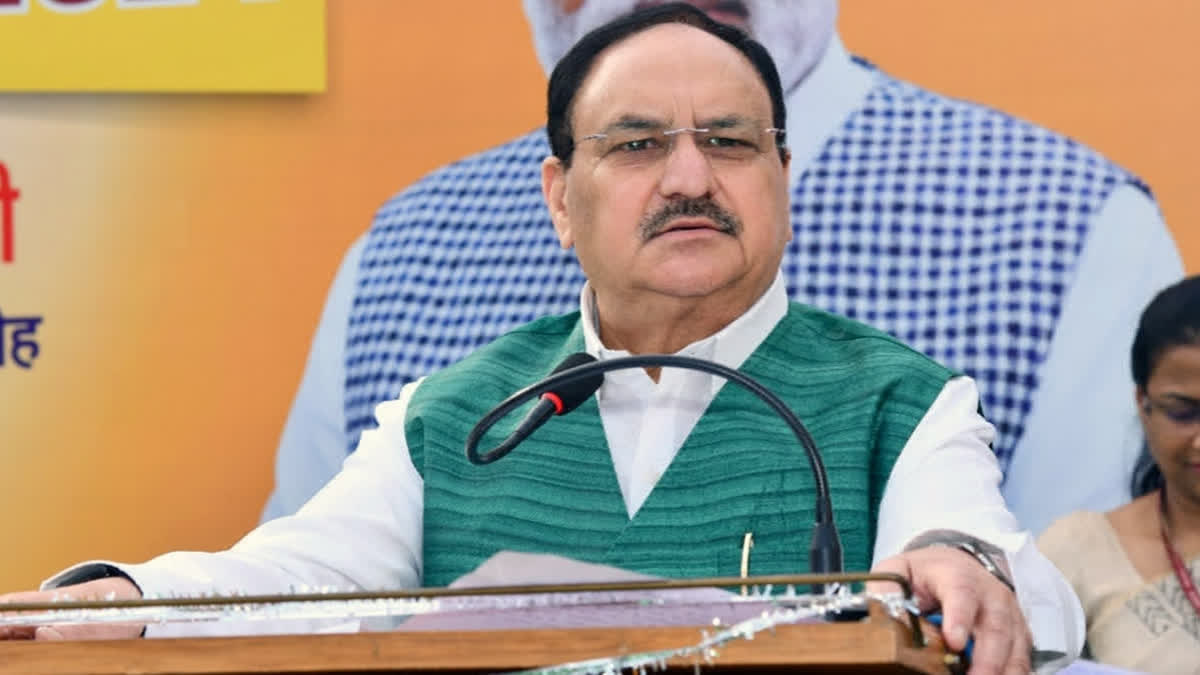Ahmedabad: ‘Ayushman Bharat’ has brought 6 crore citizens aged 70 and above under it, and the Centre’s flagship health insurance programme now covers over 45 per cent of India’s population, Union Health Minister JP Nadda said here Saturday.
The Union Cabinet in October last year approved health coverage to all citizens aged 70 years and above irrespective of income under the ‘Ayushman Bharat Pradhan Mantri Jan Arogya Yojana’ (AB PM-JAY).
“Under Modi 3.0, we have added 6 crore people above 70 under Ayushman Bharat. Now, more than 62 crore people, or over 45 per cent of India’s population, are covered, not in health insurance but under a ‘health assurance’ scheme with an annual coverage of Rs 5 lakh,” he said.
Speaking at the 'IIMA Healthcare Summit 2025' organised at the Indian Institute of Management Ahmedabad, he called the scheme a game changer and said it has benefited more than 4.2 crore citizens.
“These are poor people – rickshaw pullers, street vendors, bus drivers, conductors, lift men, security guards, barbers, shoemakers – who perhaps would never have thought about caring for their health,” Nadda said.
In its fight against tuberculosis (TB), India has achieved a decline in the incidence rate of 17.7 per cent (from 237 per 1,00,000 population in 2015 to 195 per 1,00,000 population in 2023), which is more than double the global decline rate of 8.3 per cent, he said.
Prime Minister Narendra Modi has set the target to eliminate TB by 2025 and efforts are being made to move fast in this direction through the use of AI and handheld X-ray devices, said the Union minister.
As far as affordable medicine is concerned, India is fulfilling the demands of the US (46 per cent of bulk supply) and UK (25 per cent of demand), and medicines manufactured in India are known for their efficacy and cost-effectiveness, Nadda said.
He said the 2017 Health Policy was framed with a holistic approach focusing on prevention, promotion, curative care, palliative care, rehabilitation, and geriatric care.
“Before 2017 we used to talk only about tertiary, primary and secondary healthcare but never about holistic healthcare. Under the dynamic leadership of Modi, we are having 1.73 lakh Ayushman Arogya Mandir, the first contact point at the grassroots level for preventive and promotive healthcare,” he said.
The ‘Mother and Child Tracking System’ (MCTS), a web-based system that monitors and tracks pregnant women and children, has tracked more than 5 crore children and over 3 crore mothers about vaccination and other programmes, he said.
He said Ayushman Arogya Mandir has a facility for checkups of people of 30 years of age so that they know about their susceptibility to various diseases.
“We are trying to see to it that people get medical facilities and are checked accordingly at 30. This strengthens promotion and preventive health care,” he said.
Up until 1998, Nadda said, India had only one AIIMS (All India Institute of Medical Sciences), which has now risen to 22 under the Modi government. Highlighting the improvement in medical education, he said the number of medical colleges has risen to 776 from 381 in 2015. In total, 1.25 lakh medical seats (UG and PG) have been added to ensure good manpower to facilitate the healthcare system, Nadda said.
India’s medical device market, currently valued at approximately $14 billion, is expected to grow to $30 billion by 2030, the minister added.



